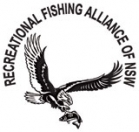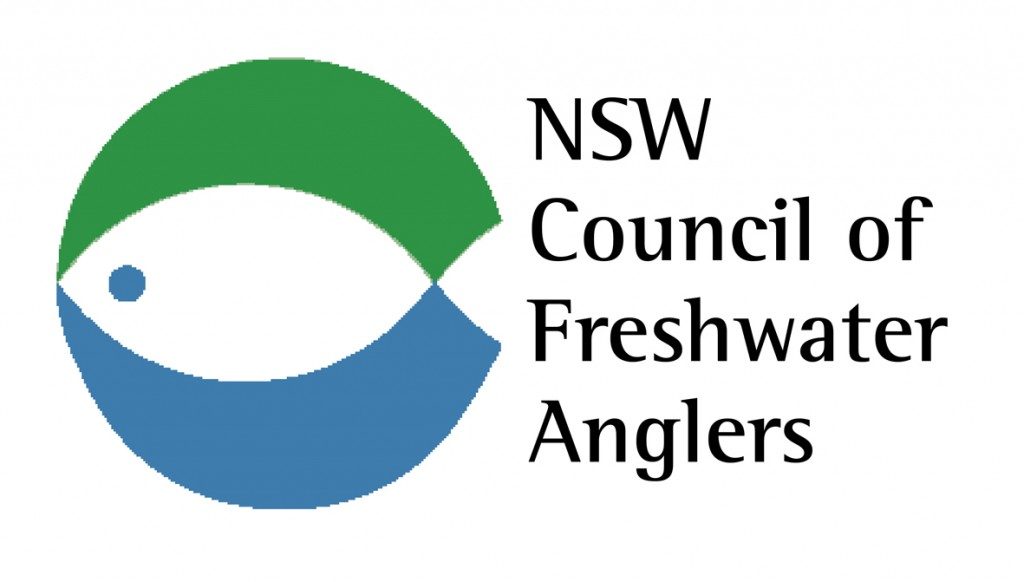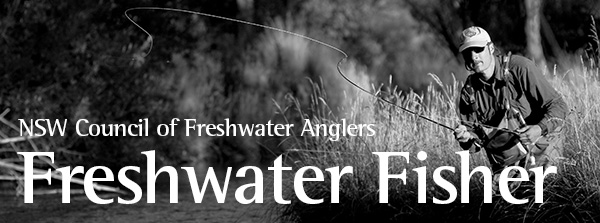I found this in the Newsletter of the Southern Fly Fishers Club. Reproduced with the kind permission of the authors and Essential Flyfisher. Check out their website and the associated blog – very informative. This full article includes a lot of detail about specific brands of lines and a discussion on anticipated costs. (The introductory portion was published in the October 2022 Burley Line.)
Bob Young and Mike Stevens
Fly lines tend to be forgotten when it comes to putting together a fly fishing outfit. Many are eager to get their hands on the latest and greatest when it comes to fly rods, often driven by the glowing descriptions – either by the rod manufacturers, a retailer or a sponsored guide or user. Make no mistake though, most rods are very good and it is great to get your hands on a new one.
Line selection is something that, chosen correctly, will make more difference than any other part of your kit. This decision will have a profound impact on your fishing. In some cases, we do end up with an appropriate line for the job but there are many occasions when anglers are fishing with the wrong line.
Take some time to think about this. It is the mass of the flyline that give you the ability to tow the fly. A light line – say a 2 weight, will not tow a 2/0 Clouser with heavy brass eyes.
However, a 10 weight line will tow it with ease. But if you used a 10 weight line fishing for trout you would spook every fish in the lake as the big heavy line lands.
Maybe you should start by selecting a fly line based on the size and weight of fly or flies, target species of fish and how you fish them. And be honest about your casting ability Let’s consider the characteristics of a fly line which affect its performance and how these characteristics relate to the above line selection criteria.
Fly Line Tapers: There are two basic common taper types – Double Taper (DT) line which has a taper at each end connected by uniformly thick line between these tapers. Some anglers like double taper lines because when one end wears out the line can be reversed and continue to be used. Weight Forward (WF) lines are made up of a thicker “head” at the front(fly) end and a thin running line at the back (reel) end. The “head” comprises a front taper, belly and rear taper. Each of these head components plays a role in how the line behaves e.g. long front tapers with small tip diameters dissipate energy and result in gentle fly presentations (good for small dry flies) whereas short front tapers and/or large tip diameters result in aggressive line turnover which is good for heavy/bulky flies and casting into the wind.
If an angler is using an aggressive front taper but needs a more delicate presentation a simple adjustment is to use a longer tapered leader which has the effect of extending the front taper. The belly of the line is where the greatest mass is and the larger the belly the more energy can be stored. This is good for longer line carries when casting further. Longer rear tapers help smooth loop unrolls when casting. In addition, long heads facilitate roll casting and mending at distance but require more casting skill for longer line carries whereas shorter heads are useful when casts must be made quickly to faster moving fish. A useful rule of thumb is that the maximum head length of a line should be about the length of line the angler can comfortably carry as any more will be wasted. Generally, head lengths vary from about 35ft to 60ft with a huge variety of tapers and designs. These variations are all designed to suit different situations.
Fly Line Weight: Fly lines are classified by weight according to a standard established by the American Fly Fishing Trade Association (AFFTA) and refer to the weight of the first 30 feet of the line (excluding the tip) e.g. if the first 30 feet of a line weighs 160 grains (regardless of whether it is a floating, sinking, sink-tip, DT or WF line) it is classified as a 6 weight line e.g. DT6F, WF6S or WF6F/S. This information is useful when choosing a rod to cast this line. A good starting point would be to look at a 6 weight rod for this although if the caster has sufficient skill almost any fly rod can be made to cast any line. It is worth noting that some fly lines are deliberately made heavier than their AFFTA rating to facilitate rod loading at shorter fishing lengths and turnover of heavier flies e.g. Scientific Anglers MPX (half size heavier) and RIO Grand (full size heavier). Heavier lines are usually needed for successful turnover of heavy/bulky flies and are useful when casting in strong winds – they are not blown around as easily. Some manufacturers’ sinking lines are also overweighted by two lines, so make sure you read the box. And remember, the line is only rated to 30 feet, so if you have a line with a long head and 50 feet of line out it is probably equivalent to a line 3 weights heavier. So, a 6 weight with long head could easily be an 8-9 weight at 50 feet.
Fly Line Coatings and Density: The fly line coating used will determine whether the line is a floating line, a sinking line or a floating line with a sink-tip as these coatings are used to change the density of a line. Whether a line floats or sinks is important to make sure that the fly is presented at the depth in the water column where the target species will be found.
For example, a floating line would be used to target fish which are found feeding at or within a few feet of the surface whereas a sinking line will be used to get down to fish below these levels. Sinking lines can be obtained with various sink rates to get the fly down a little (intermediate lines) or a lot (very fast sinkers). Note that sinking lines come in three types – “standard” sinking lines which sink in a U shape where the whole line supposedly sinks evenly, then parabolic, where the belly of the line sinks quicker than the tip (and fly), or “uniform” sinking lines which sink in a relatively straight line (the fly sinks the furthest). The uniform lines can give better take detection. Sinking lines can be easier to cast than floating lines as they have smaller diameters (for a given line weight) but are more difficult to get out of the water to commence a new cast. Most of the line needs to be retrieved before false casting.
The line coating will also impact on line flexibility with temperature which is important when considering whether your target species will be found in the mountains or at the equator at sea level. The coating materials also have varying degrees of resistance to abrasion with the stiffer coatings (tropical lines) generally being more resistant to wear. If you use a tropical line in colder climates “memory” (coiling) will be an issue. Likewise, a cold water line used in the tropics will be very limp and won’t shoot through the guides.
Fly Line Texture: Lines are available today with or without textured coating. The purpose of texturing is to reduce the line’s contact area with the rod guides thereby reducing friction and improving shootability. They can be noisy though and this annoys some. Bruce Richards, fly line designer for over 30 years for Scientific Anglers, says textured lines never need cleaning and will always remain more slippery than a smooth line. Some manufacturers have different textures in different places throughout the length of the line.
Fly Line Core: The breaking strength of the line (relevant for the size and aggression of the target species) and also the amount of line stretch (relevant for detecting unseen takes and also for avoiding break-offs when setting hooks in large, fast-moving fish). The core strength can be anywhere from 15 to 100 pounds. For trout fishing it is typically 20 or 30 pounds. RIO have lines called ‘InTouch’ that have very low stretch and Airflo have a popular sinking line called ‘Sixth Sense’.
Fly Line Colour: Lines are available in a wide range of colours and there is a division of opinion as to whether bright lines spook fish. There is no doubt that it is easier for the angler to see where their cast is going with a brighter line. Line flash is probably more significant than colour, although if you go to New Zealand, guides will probably not talk to you if you have a bright line. Interestingly, the more you pay the more colours there are in a line. Cheap lines are usually one colour, whilst the expensive lines are 2-3 colours with the change in colour usually around the end of the head.
Some trout lines and profiles explained:
RIO Gold: The RIO Gold is an all-round, floating line. It has been very popular worldwide for many years and is made by Farbank, who also own Sage and Redington. The line has a long head and back taper that gives casters good line control and stability at range – whether casting or mending. The profile is designed to load a fly rod at close range, and has a head length of 46 feet.
RIO Grand: The RIO Grand is a full line size heavier than the industry standard and features more weight distributed towards the front of the line to easily load faster action fly rods. The line has a short head that is easy to cast, making it the perfect choice for fast action rods, or for more novice casters that like a little extra load to help them with the cast.
Scientific Anglers Trout: True to line weight with a very long head of more than 60 feet. This is almost identical to SA’s Expert Distance line that gained a lot of favor over the last few years. A good caster can hold a lot of this line in the air and it is a good line for roll casts. A good dry fly line in three different styles – Mastery, Amplitude Smooth and Amplitude texture.
Scientific Anglers MPX: Short head and overweighted. Depends on which weight, but the head is around 35ft with a short front taper and most of the weight in the first few feet. This line will turn over heavy flies and nymphs with ease. The MPX comes in three incarnations – Mastery at the budget end and the Amplitude, which is super slippery with texture. As it has a short head is does not overload the rod when you have 50-60 of line out.
Scientific Anglers Infinity: A line that is overweighted by half, it loads the rod quickly and is a great all-round line – especially good for beginners.
Whilst there are many different brands of fly lines on the market the top three are Scientific Anglers, RIO and Airflo. Cortland was the leading brand for many years, but lost their way for a number of reasons. Cortland is doing a lot of work to re-establish themselves and look to be doing a great job.
SA and RIO also make lines for other brands so it is difficult to know exactly who built your line.
How much should you pay for a fly line? This is a very big question and one with a lot of considerations. You will find lines from under twenty bucks for an internet bought Asian made piece of coloured string to over $200 for the best lines.
At the top of the price range is the Scientific Anglers Amplitude range. These have texture, varying colours along their length and are constructed from the slipperiest and longest lasting coating. Are they as slippery as SA says? At a recent show two lines were cast by 10 different people. They were similar tapers. One was a leading brand and their standard line. Price around $140. The second line was the SA Trout taper. No one knew which was which. Without exception everyone cast 10-15ft further with the SA Amplitude line. SA claim their lines last many times longer than standard lines. If that is true it makes them the best value.
Currently the SA Amplitude Trout is my favorite line. I fish with the same line that we cast on the bitumen car park at the rear of the shop. It gets a very hard time and is still performing brilliantly on the water. (Mike)
SA have a new line coming to the market in October. It is called a Trout Standard and has a total head length of around 50 feet. It is a textured line and looks like a very good all-round line.
Sinking Lines: I will delve into sinking lines in another article.




